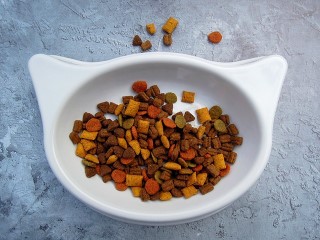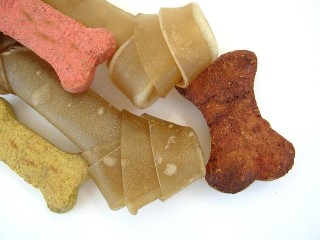
Congratulations on welcoming a furry friend into your life! Bringing home a new puppy is a whirlwind of excitement and cuteness. But amidst the playful nips and adorable zoomies comes the inevitable task of potty training.
Don’t worry, though! With a little patience, consistency, and this handy guide, you’ll have your pup mastering the art of going potty outside in no time.
The Potty Training Journey
Potty training might seem daunting at first, especially with those early morning accidents. But remember, puppies have tiny bladders and haven’t yet learned proper elimination habits.
The good news is that with consistent effort, you’ll be rewarded with a well-trained pup who brings joy and companionship to your life. Consistency is key – the more you stick to a routine, the faster your puppy will learn where and when to go potty.
Setting Up for Success
Before diving into the nitty-gritty of potty training, let’s get your home and supplies prepped for success.
- Puppy-proofing: Imagine your home from a puppy’s perspective. Anything they can reach is fair game for chewing or eliminating on. Pick up loose items like shoes, rugs, or electrical cords. Confine anything valuable or potentially dangerous with baby gates or crates.
- Gathering your Supplies: Here’s what you’ll need for a smooth potty training journey:
- Leash and collar: A leash helps control your puppy during potty breaks and keeps them focused on elimination.
- Treats: Small, high-value treats like chopped-up hot dogs or bits of cheese are fantastic for rewarding good potty behavior.
- Enzymatic cleaner: Accidents happen. Choose an enzymatic cleaner specifically designed for pet messes to thoroughly remove odors and prevent repeat marking.
- Crate (optional): Crate training can be a valuable tool in potty training. It provides a safe, den-like space for your puppy and helps with managing bathroom breaks, especially at night.
Potty Training Schedule
Just like human babies, puppies can only hold their bladders for a limited time. A good rule of thumb is one hour for every month of age. So, a two-month-old puppy can typically hold it for about two hours. This means frequent potty breaks are crucial!
Here’s a breakdown of when to take your puppy out:
- First thing in the morning: After a night’s sleep, your puppy will need to eliminate.
- After meals and playtime: Eating and drinking stimulate the bladder, so take your puppy outside after every meal and play session.
- Before bedtime: Give your puppy one last chance to go potty before settling in for the night.
- Every 2 hours during the day: Set a timer or create a routine to ensure your puppy has regular opportunities to go potty outside, especially when they’re young.
Taking it Outdoors
Now that you have a schedule, let’s talk about taking your puppy outside. Consistency is key here too!
- Pick a designated potty spot: Choose a specific area in your yard, ideally a patch of dirt or grass, where you’ll always take your puppy to eliminate. This helps them learn the association between the location and going potty.
- Leash and go: Put your puppy on a leash and head straight to the designated potty spot. Avoid distractions like playing fetch, as you want your puppy to focus on elimination.
- Patience is a virtue: Don’t force your puppy to go potty if they’re not ready. Stand patiently in the designated area and wait for them to eliminate on their own.
Rewarding Good Behavior
Positive reinforcement is the key to successful potty training. When your puppy eliminates outdoors, celebrate! Here’s how:
- Praise and treats: The moment your puppy goes potty in the designated spot, shower them with enthusiastic praise and a delicious treat. This positive association will make them want to repeat the desired behavior.
- Be consistent with rewards: Always reward your puppy for going potty outside, regardless of the time of day. This reinforces the connection between elimination outdoors and a positive experience.
Managing Accidents: It Happens, Here’s How to Deal
Accidents are inevitable during potty training. Puppies have tiny bladders and are still learning proper elimination habits. Here’s what to do when your puppy has an accident:
- Don’t punish your puppy: Punishment will only confuse or frighten your puppy. They won’t understand why they’re being scolded and might even associate punishment with going potty altogether.
- Clean up effectively: The key is to remove all traces of the accident to prevent repeat marking. Use an enzymatic cleaner specifically designed for pet messes. These cleaners break down odor-causing enzymes, making the area less attractive for your puppy to return to.
When Things Don’t Go According to Plan
Even with the best planning, setbacks can happen during potty training. Here’s how to navigate them:
- Be prepared for setbacks: Factors like growth spurts, illness, or changes in routine can cause accidents. Don’t get discouraged – these are temporary setbacks, not failures.
- Maintain consistency: The most important thing is to stick to your potty training routine. Consistency helps your puppy learn and develop predictable elimination habits.
- Consult your veterinarian: If potty training issues persist despite your best efforts, consult your veterinarian. They can rule out any underlying medical conditions that might be contributing to the accidents.
Conclusion: The Joy of a Well-Trained Pup
Potty training might seem like a challenge at first, but with consistent effort and positive reinforcement, you’ll be rewarded with a well-trained pup who brings joy and companionship to your life. Remember, patience is key.
Celebrate the small victories, and soon you’ll have a furry friend who knows exactly where and when to go potty, making your life (and your carpets) a whole lot easier!









